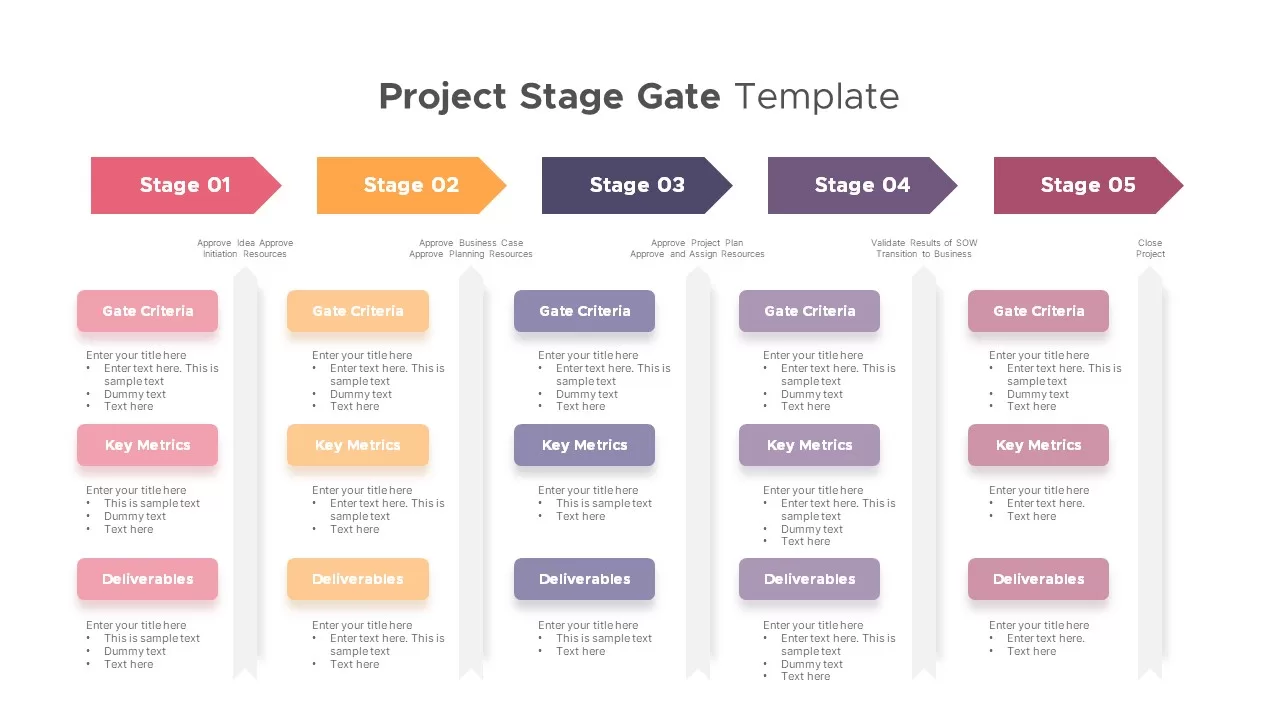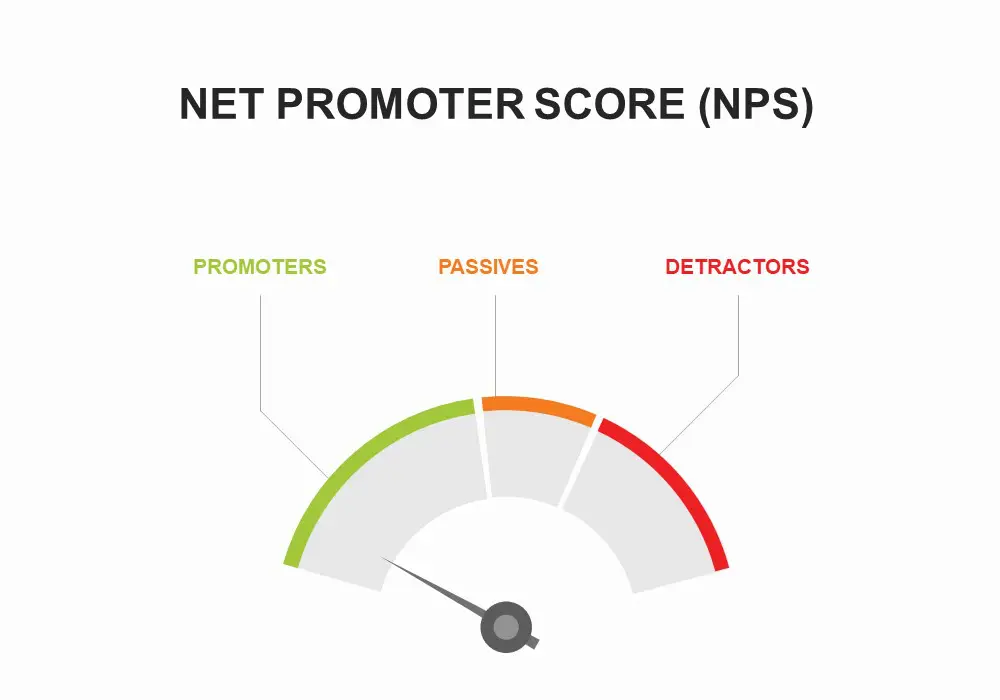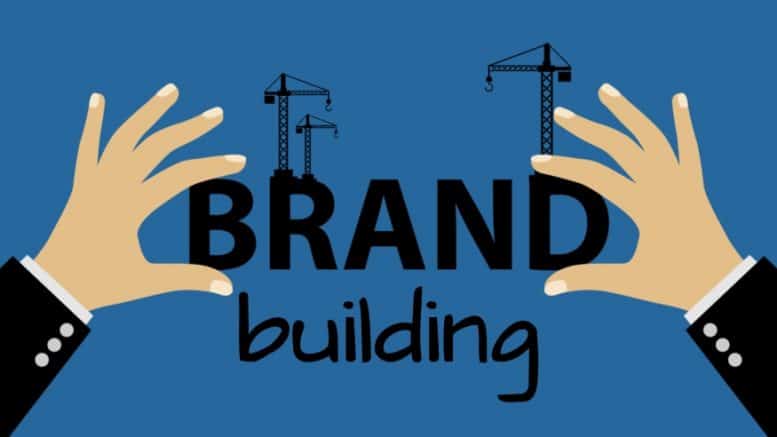Stage-Gate Process for Product Development – Templates and Guide

As a project manager, you may be well aware of the Stage Gate Process concept, a patented trademark of Robert Cooper. Before entering a product development, or process improvement, project managers need to actively analyze the feasibility of ideas and concepts and identify the most viable for a particular project. The Stage Gate Process aid you decides whether or not to incorporate an idea to proceed to the next stage. After reading this, you will understand the basics of Stage Gate and product development phases.
For your convenience, this article is comprised of Stage Gage Process Templates for instant download.
What is the Stage Gage Process
The Stage Gate Process, or Phase Gate process, is a project management technique that breaks down project or product development into five stages for best results. It is fit for almost any project nevertheless most commonly used for new product development. The core aim of the stage gate process is to assess the viability of a new product or process improvement for business change. Gate phases in this project management methodology are built to minimize or prevent risks. Here, tasks can be divided into individual phases called “stages.” Each stage help collect information or reach certain goals.
There will be a gate between the two stages where the procedures can be verified and validated to determine whether the team should move to the next stage or a review should be applied in the existing step to improve before moving to the next stage.
Steps are involved in the Stage Gate Process
Stage Gate project management methodology combines various steps, where the ideas will go through six stages and five gates. Let’s have a closer look at each stage and the entire process and how it supports project managers to make feasible decisions. Including the ideation stage, the traditional phase gate process comprises six steps: scoping, building a business case, development, testing &validation, and launch.
Idea Generation or Discovery
Idea generation involves brainstorming to create a clear idea to practice. This can take into proceed based on methods a company might search for new ideas and improved processes for project success. This stage leverages research, brainstorming, and customer feedback with in-house as well as outside expertise and perspectives.
Scoping
In this stage, the team provides a clear statement of the problem. The product’s viability is analyzed based on several factors during this stage. These might include the product’s requirements in the market, competitors’ position, market threats, market, and economic conditions, product performance, and the strength and weaknesses of the product, etc., apart from SWOT analysis, PESTLE analysis, and Porter’s five forces can be applied in this stage.
Build Business Case
Once the idea is shaped and there is a clear vision of the solution, the team works to develop a product definition and analysis, a project plan, a business case, and a feasibility review. This business case seeks to convince the different teams involved in product development and its viability. This is the final phase of concept development, so that which includes these four steps to avoid pitfalls.
Development
In the development stage, the team applies the plan formulated during the preceding phases and puts it into action by creating a prototype for the product. The marketing initiatives also plan to be set, and they will align with the already defined goals. In this phase, the timeline is crucial to achieving six factors: specific, measurable, actionable, realistic, and time (SMART). It goes under constant updates based on the production status.
Testing and Validation
This is the quality assurance phase of the product. Here, the product is validated, and the customer acceptance and financial attributes are verified. Feedback is collected to improve the product designs. First, the phase goes to team testing for problems and drawbacks in the product. Then, it goes for the field test to identify the market feasibility of the product.
Launch
Once every stage is cleared, the product moves directly to the launch stage, where the product is exposed in the market based on the marketing strategy. The launch also looks several other considerations, including demand of product, volume to be produced, modes of delivery, customer redressal etc.
Don’t forget that decision making and review checkpoints ( i.e., gates) are in between these stages. Once the product has launched, it is time for managers to review the Stage Gate Process and whether or not it was successfully executed. Stage Gate process is common for software development companies to expect bugs and roll out fixes after going through customers and grievances regarding software issues. Many OS system developers often give priority to enterprise users compared to common users.
Structure of Gates
A Gate is used to validate between every two stages. It tests the outcome of each stage and ensures every phase meets the requirements. The process at each Gate involves three simple steps: Inputs, Criteria, and Outputs.
Input: Input consists of all required deliverables and records that need to be supplied by the project manager and his team.
Criteria: These are metrics used to assess the quality of the inputs.
Outputs: Outputs are review results and the decision that caused to go with the next stage or return to the previous stages.
When products are going through various stages, there will be five decisions based on the Stage evaluation. These are possible results leading from a Gate.
GO: The team can go to the subsequent stage
Kill: The project is not viable enough and needs to stop.
Hold: The project should be held for the time being due to some reasons.
Recycle: A few adjustments are required before moving to the following stage
Conditional Go: Efforts for product development can go forward according to the conditional statement.
Stage Gates: Checking the Quality of an Idea
Checking the quality of an idea includes various elements, points, and possible results. For example, using different scaling criteria, you can assess a project’s viability.
Quality execution
The quality of execution in stage gate process verifies the quality of execution of the earlier steps.
Business Rationale
The business reasoning is the evaluation of the viability of the project. It is often used to determine whether the project can be productive in attaining desired goals. Project success will be threatened if a project isn’t judged rationally due to its injudicious use of the resource.
Action Plan
The action plan must be verified to determine if the resource needed for the product can be supplied. Is the project’s execution can be safe on the manager’s hand, and whether the desired goals are too unrealistic or need to be focused? Would it need to reallocate money or increase available resources? The action plan’s viability is just as key as product development.
Advantages and Disadvantages of Stage Gate Project Process
Like any other methodology, Phase Gate Process has merits and demerits. However, the process is too strict about inspiring creative and innovative thinking. When the process doesn’t ensure successful innovation, it may be considered a substandard methodology.
Advantages
Iteration through Gates
The project team has an opportunity to iterate and improve the product through multiple prototypes. This is one of the key advantages of the Stage Gate process. Here, the gates between each Stage enable the team to hold and validate the progress against the desired goal. If the outcome of the process is allowed, then the process may take on to the following Stage; otherwise, it is iterated based on the corrective reviews.
Assessment of Progress
Every stage of development can be assessed with the project Gate process. Even when a product is deemed feasible, its launching will take time since it does also possible course of correction. These stages are the soul of the stage gate process.
Adaptive and Flexible
Project managers can incorporate a spiral iteration process involving the customer in each stage. The customer provides feedback during the Gates to create a test-revise repetition process.
Reduce complexity
Despite a complex process, the structural alignments of Stage Gate will reduce complexity. In addition, the linear model methodology can help streamline a structured model to assess the product’s feasibility.
Disadvantages
Lack of innovation and Creativity
Since it gives complete support for divergent thinking, it looks at brainstorming, mind maps, reversed brainstorming, and other techniques to acquire product-related information. This usually lacks the team’s creative thinking. However, the Product Gate process is most common in software development; developing a product like software can be complex and need a lot of creativity; the project gate process raises many questions about creativity and innovation.
Excessively Structured Process
The Phase Gate Process might appear excessively structured for companies running on a small budget. All the processes need more time and resources that could not be bearable for small businesses.
Limited iteration
Another disadvantage related to the Stage Gage Process is the limited iteration. The progress from one Stage to another is linked to Gate testing. The progress is either to the next Stage or the previous one.
Oversimplifications
Stage Gate process only represents some products and projects because the little boxes cannot place far complex approaches needed to make a product launch. So, it appears to be an oversimplification of the process.
How to Present a Stage Gate Process?
If you want a PowerPoint presentation on Stage Gate Process, you can instantly download Stage Gage Process Templates, which include all process elements in a readymade design. You can easily lecture about the steps of the process stage by stage if you have a Stage Gate PowerPoint Template. This allows you to convince your team about the steps to follow when working on a project with the application of Phase Gate methodology.

Outline a basic introduction
Before you discuss the product development phases, start with a basic overview of the project. It will help the project manager to answer why the initiative is being taken in practice.
Visually explain the Gates
Showing the Gates is key when creating a presentation regarding the Stage Gage process. A One Pager template allows you to present all gates in a single slide before the audience. The Stage Gage Process Template is the best example, where all phases and gates can easily be detailed.

Discuss Milestones and Key decisions
Like the explanation of each Gates, discussing key milestones and decisions is essential. You can present it with each gate using the layout provided in this template. You can see this table layout on the below Stage Gage Process Template.

Explain the result of the Gates
Elaborating on the results provides a better view of each Gate before discussing the outcome. This deliberation includes the previous assessment, later stages, product approval, development, testing, validation, and launch.
Discussion on the Outcomes
It is important to discuss the outcome of the Phase Gage Process. Was the product successfully launched? If so, what were the customer responses? Did the product able to reach the expected goals? You can show the entire process using a project gate template or with a five-step funnel diagram.
Conclusion
Stage Gage Process is more iterative and scalable and participates with the customer feedback to be taken and considered in each stage. In addition, it provides a roadmap for passing the product through various stages to guarantee all the endeavors are going in line with desired goals when applying for Gate reviews. The Stage-Gate process takes into account all variables to achieve product goals. It assesses consumer demand, product quality, changing market conditions, product distribution, customer journey, marketing, etc. However, all these variables could not be addressed after the product’s launch. So, discussing and analyzing changing marketing conditions, consumer needs, geo-socio-political changes, technology, and other relevant attributes is essential. The stage Gage process should be a continuous process; we hope experts will add new Gates for Nextgens.


